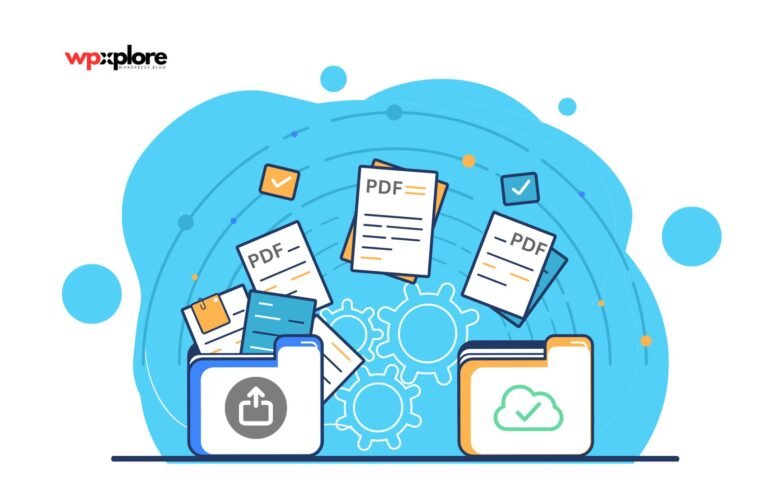Listen To The Podcast on This Article
Have you ever wondered what will happen to SEO as AI takes over? It’s a valid concern. Optimizing for keywords in today’s AI-driven world might not be enough to keep your content visible and engaging.
Traditional SEO has relied mainly on keyword matching. While this approach has worked for a long time, it’s becoming less effective as user expectations grow. People now want quick, direct answers to their questions.
AEO is a new approach that focuses on understanding user intent. Instead of just keywords, it prioritizes providing immediate, concise answers that align with how people search today.
As voice search and AI grow, AEO is becoming the future of search optimization. By embracing AEO, businesses can enhance online visibility, improve user engagement, and gain a competitive edge.
In this blog, we’ll delve deeper into the differences between SEO vs AEO, the importance of voice search and AI, and practical strategies for implementing AEO in your search optimization efforts.
45.1% of all clicks on Google come from organic search results, and 68% of online experiences begin with a search engine
Understanding SEO and AEO
Contents
- Understanding SEO and AEO
- SEO vs AEO: Understanding the Differences
- Comparison Table Between SEO vs AEO
- The Rise of Voice Search and AI
- Search Optimization: Why AEO Is The Future
- How To Use AEO In Your Strategy
- Few Words
- FAQs – SEO vs AEO
- 1. What is the difference between SEO vs AEO?
- 2. How does AEO impact SEO strategies?
- 3. Is AEO more effective than SEO?
- 4. What role does voice search play in AEO?
- 5. Can traditional SEO techniques be used for AEO?
- 6. What are the benefits of implementing AEO?
- 7. How can I optimize content for AEO?
- 8. What tools can help with AEO optimization?
- 9. Is AEO important for local search optimization?
- 10. How is AI influencing AEO?
To understand the importance of Ask Engine Optimization (AEO) in today’s digital world, it helps to first look at traditional Search Engine Optimization (SEO) and see how AEO is changing the game.
A. What is Search Engine Optimization (SEO)?
Search Engine Optimization (SEO) is about improving a website’s visibility on search engines. The main aim is to attract more visitors by ranking higher for relevant keywords. Here are the key parts of SEO:
i. Keyword matching
This involves finding the right keywords that potential visitors are searching for and including those keywords naturally in your website content.
ii. Backlinks
High-quality backlinks from trustworthy sites can boost your website’s authority and help improve its search rankings. Think of backlinks as votes of confidence for your content.
iii. On-page SEO
On page SEO focuses on optimizing individual pages on your website. Essential elements include title tags, meta descriptions, and headers, which help search engines navigate and index your site easily.
B. What is Ask Engine Optimization (AEO)?
Ask Engine Optimization (AEO) takes a different approach to search optimization. Rather than just focusing on keywords, AEO is about answering users’ questions. Here’s what AEO emphasizes:
i. Providing direct answers
AEO is all about understanding users’ specific questions and creating content that directly addresses those questions. This increases the chances of being featured in snippets or voice search results.
ii. User intent
AEO goes deeper by considering why users are searching. It is essential to know whether they are looking for information, ready to purchase, or seeking a specific service.
iii. Content relevance
For AEO, staying relevant is key. The goal is to provide content that answers questions and meets users’ needs and expectations, creating a more enjoyable experience.
The first result is ten times more likely to be clicked in Google search results than the tenth result
SEO vs AEO: Understanding the Differences
SEO (Search Engine Optimization) and AEO (Answer Engine Optimization) aim to enhance online visibility but use different methods. Here’s a simple breakdown of how they differ:
i. Content focus
- SEO: Focuses on creating content filled with keywords to improve rankings on search engines.
- AEO: Aims to directly answer user questions, which helps content show up in featured snippets and voice search results.
ii. User intent
- SEO: Matches search queries to specific keywords.
- AEO: Works to understand what users mean by their queries, which provides a more relevant experience.
iii. Voice search optimization
- AEO: Optimizes content to fit the natural, conversational style of voice searches.
- Optimizing for this format is essential as voice searches are becoming more popular (over 50% of all online searches).
vi. Use of AI tools
- AEO: Utilizes AI tools like machine learning and natural language processing to understand user intent better and enhance optimization strategies.
- SEO: While SEO uses some AI, it mainly relies on traditional keyword analysis and optimization techniques.
Comparison Table Between SEO vs AEO
Here is a comparison table highlighting the key differences between SEO vs AEO. This table illustrates the distinct approaches of SEO and AEO, with AEO employing a modern, AI-driven methodology that focuses on user intent and is compatible with voice search.

The Rise of Voice Search and AI
With advancements in technology, voice search and AI have significantly reshaped how users interact with search engines, marking a pivotal shift in search optimization.
Trends in voice search
Voice search is becoming increasingly popular, with studies indicating that over 50% of users depend on voice-activated devices for quick, hands-free searches, particularly on mobile devices and home assistants.
Voice queries tend to be longer and more conversational, often phrased as complete questions rather than fragmented keywords, impacting how content should be structured to align with natural language.
Consumer behavior has shifted due to voice search, with users expecting immediate, precise answers. This shift has pressured search engines and websites to prioritize direct, concise responses.
The popularity of smart speakers and virtual assistants like Amazon Alexa, Google Assistant, and Apple Siri has fueled this trend, as people increasingly use voice search for local queries, product information, and quick answers.
Role of AI in search optimization
Artificial intelligence or Generative AI, particularly advancements in natural language processing (NLP) and machine learning, has transformed search optimization. AI helps search engines better understand complex queries by analyzing context, intent, and semantics rather than merely matching keywords.
NLP enables search engines to interpret user intent more accurately, enhancing their ability to deliver relevant, high-quality answers, especially for voice-based and question-format searches.
AI-driven tools also impact content creation, enabling marketers to develop content that aligns with user intent. Tools like chatbots, AI content generators, and SEO analyzers help streamline the process, making producing content that fits conversational and intent-focused queries easier.
Additionally, AI’s ability to track user behavior and preferences helps optimize content based on predictive analytics, ensuring content remains aligned with changing trends and user expectations.
As AI continues to evolve, its role in search optimization will expand, setting a new standard for dynamic, personalized, and user-focused search experiences.
Search Optimization: Why AEO Is The Future
As search evolves with voice and AI, Ask Engine Optimization (AEO) is essential for modern digital strategies.
1. Enhanced visibility
AEO boosts discoverability by prioritizing featured snippets and knowledge graphs, capturing users’ attention directly on search result pages.
2. Better user experience
AEO’s focus on providing clear, direct answers aligns with user intent, creating a smoother and more engaging experience, especially for voice and mobile users.
3. Maximizing ROI
Case studies show that AEO tools deliver a higher ROI by enhancing lead generation and cutting content costs through AI-driven insights.
4. Adapting to the digital landscape
AEO allows for continuous tracking and analysis, ensuring strategies remain relevant and adaptive to shifts in user behavior and digital trends.
Last year, AEO’s market capitalization was $3.74 billion, and its enterprise value was $4.87 billion
How To Use AEO In Your Strategy
Adopting Ask Engine Optimization (AEO) techniques can boost visibility and improve user engagement. Here’s a straightforward approach to implementing AEO effectively:
A. Steps to optimize for AEO
Let’s discuss the steps to follow to optimize for AEO:
i. Focus on user questions in keyword research
Instead of focusing only on keywords like “digital marketing strategies,” try to include questions users commonly ask, such as “What are the best digital marketing strategies for beginners?”
ii. Structure content to provide direct answers
Aim to answer questions right away. For example, if your content targets “How to bake a chocolate cake,” start with a quick, step-by-step guide that’s easy for search engines and users to digest. This approach can increase the chances of appearing in featured snippets.
iii. Optimize for voice search with natural language
Since many people use voice search, consider how they’d naturally ask questions like “How do I start a blog?” or “Where can I find vegan recipes?” Using conversational phrases in your content makes it more likely to match voice search queries.
iv. Add an FAQ section
Including an FAQ section in your content helps address common questions directly. For example, in an article about fitness routines, add FAQs like “How often should I work out?” or “What exercises are best for beginners?” This makes your content more accessible and optimized for AEO.
B. Technical optimization
Let’s discuss the technical optimization of AEO:
i. Implement structured data and schema markup
Using structured data helps search engines display your content accurately. For example, adding FAQ schema to your FAQ section can help those questions appear as direct answers in search results, improving visibility.
ii. Utilize AEO tools for efficiency
Tools that help with keyword research and structured data can make AEO implementation smoother. For instance, plugins like Yoast SEO and Rank Math can help with FAQ schema, while tools like AnswerThePublic generate popular user questions for your target topics.
Few Words
Ask Engine Optimization (AEO) is becoming increasingly important in today’s fast-changing digital world. As search technology improves, AEO helps make your content more visible and enhances user experience by focusing on providing straightforward answers to questions. By adopting AEO strategies, you’ll be better equipped to handle voice searches and AI tools, leading to more engagement and satisfaction from your audience.
Now is the perfect time to rethink your SEO strategies. Consider adding AEO techniques to stay ahead of the competition and effectively connect with users in this new era of search optimization.
We would love to hear your thoughts! If you have experiences or insights about SEO vs AEO, please share them in the comment section below.

FAQs – SEO vs AEO
1. What is the difference between SEO vs AEO?
SEO (Search Engine Optimization) focuses on improving website visibility through keyword optimization, while AEO (Ask Engine Optimization) emphasizes providing direct answers to user queries, primarily through voice search.
2. How does AEO impact SEO strategies?
AEO shifts the focus from traditional keyword matching to understanding user intent, requiring SEO strategies to adapt by prioritizing content that directly addresses users’ questions.
3. Is AEO more effective than SEO?
AEO can be more effective when users seek quick, concise answers, particularly in voice search scenarios. However, both strategies can complement each other.
4. What role does voice search play in AEO?
Voice search is central to AEO, as it optimizes content for natural language queries, enhancing discoverability and relevance in AI-driven search results.
5. Can traditional SEO techniques be used for AEO?
Yes, traditional SEO techniques can be integrated into AEO practices, but with a greater emphasis on user intent and providing direct answers.
6. What are the benefits of implementing AEO?
Benefits of AEO include increased visibility, better user experience, higher engagement rates, and improved content discoverability in voice search results.
7. How can I optimize content for AEO?
To optimize for AEO, focus on answering common user questions, using natural language, implementing structured data, and considering creating FAQ sections on your site.
8. What tools can help with AEO optimization?
Tools like Google Search Console, Answer the Public and various AI-driven content optimization platforms can assist in identifying user queries and optimizing content accordingly.
9. Is AEO important for local search optimization?
Yes, AEO is crucial for local search, as it helps tailor content to answer location-specific queries, improving visibility in local search results.
10. How is AI influencing AEO?
AI enhances AEO by enabling a better understanding of natural language processing, helping optimize content creation, and improving the ability to analyze user intent and behavior.








Leave a Comment